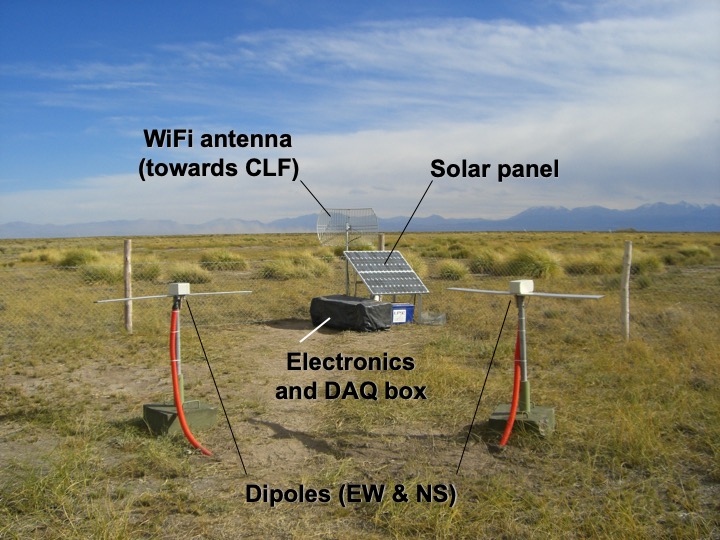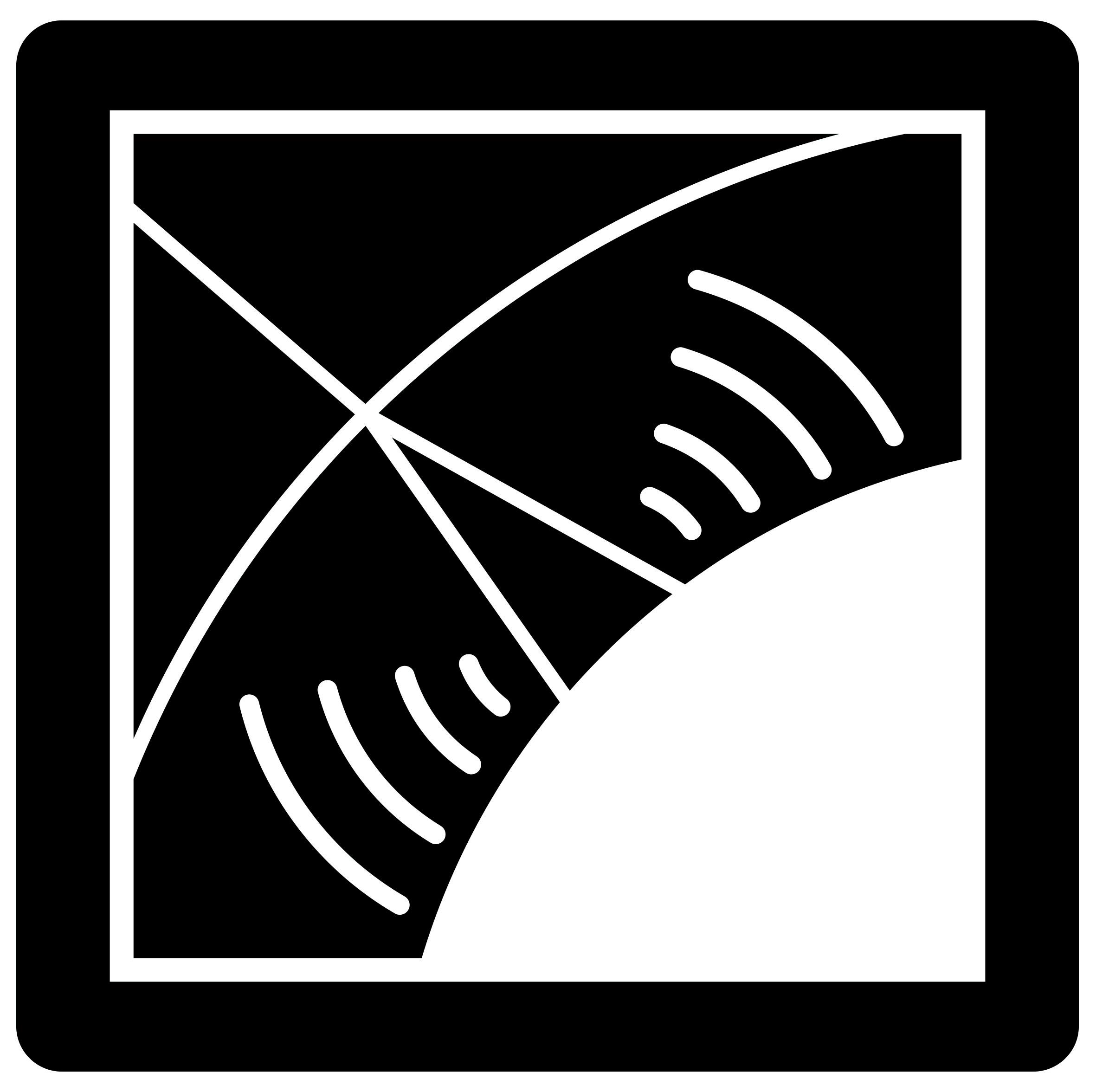Results of a self-triggered prototype system for radio-detection of extensive air showers at the Pierre Auger Observatory
We describe the experimental setup and the results of RAuger, a small radio-antenna array, consisting of three fully autonomous and self-triggered radio-detection stations, installed close to the center of the Surface Detector (SD) of the Pierre Auger Observatory in Argentina.
 Figure: photo of a radio-detection station with its two dipole antennas and, in the back, the solar panels, the electronics box (covered by a black plastic sheet) and the WiFi antenna pointing toward the CLF.
Figure: photo of a radio-detection station with its two dipole antennas and, in the back, the solar panels, the electronics box (covered by a black plastic sheet) and the WiFi antenna pointing toward the CLF.
Published by The Pierre Auger collaboration and S. Acounis, D. Charrier, T. Garçon, C. Rivière, P. Stassi, in Journal of Instrumentation, Volume 7, November 2012, P. 11023 https://doi.org/10.1088/1748-0221/7/11/P11023
